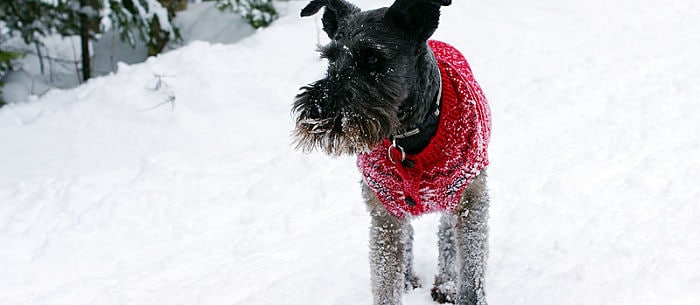Depending on the season and the type of dog you have, you might be used to seeing lots of loose hairs scattered around your home. Some dog owners could collect enough to line all the local birds’ nests for miles around. But what about when you see bald spots on your pet? Is that supposed to happen? Read on to find out everything you need to know about dog hair loss.
What’s the Difference Between Hair Loss and Shedding?
Shedding is a normal process that happens when dead hair falls out and new growth replaces it. And losing a winter coat in summer is to be expected with many dog breeds. But hair loss, or alopecia, is different. “The hairs fall out at a higher rate than they are replaced, and the result is hairless areas,” says Dr. Leon Freeland, a veterinarian and regional medical director of the Best Friends Veterinary Group.
It should be relatively easy to tell the difference between shedding and more serious hair loss. “Double-coated dogs” — breeds with a longer, tougher outer coat and a soft, dense undercoat, such as Pomeranians and Siberian huskies — “may lose hair in clumps and patches, but no baldness should ever be seen,” explains Dr. Amanda Landis-Hanna, a veterinarian.
What Are the Reasons for Dog Hair Loss?
“There are numerous reasons for dog hair loss, such as allergies, a skin infection, hormone imbalances, fleas, mange and poor nutrition,” says Dr. Freeland. Excessive grooming by your dog from allergies or anxiety, reactions to topical medications, tumors and cancer can also cause alopecia.
Of course, some dogs are hairless by breed, such as the Xoloitzcuintli, the American Hairless Terrier, the Chinese Crested and the Peruvian Inca Orchid. These dogs are bred to be hairless. When dogs lose hair they are supposed to have, however, it probably means something’s wrong.
How Should You Treat Dog Hair Loss?
The proper way to treat dog hair loss depends on the reason. “Since excessive hair loss or alopecia is usually a sign of another condition, there is no general or just one recommended treatment,” says Dr. Denise Petryk, director of veterinary services at Trupanion. Your veterinarian can perform diagnostic tests to determine the underlying cause for hair loss. Depending on the outcome, the doctor might prescribe a medicated shampoo, flea treatment or medication.
When Do You Take Your Dog to the Veterinarian?
Bald spots of any type are not a normal part of a dog’s coat. The hair loss you note could be one small bald patch, several bald spots or many empty areas across your pet’s body. “Pet owners should see their veterinarian at the first sign of bald spots,” says Dr. Freeland. Other signs that indicate your pooch needs to visit the vet are a lackluster coat, thinning hair or a skin irritation, adds Dr. Petryk.
What Will Your Veterinarian Do?
Your vet should give your dog a full physical exam. “She will evaluate your dog’s skin and hair and check for parasites,” says Dr. Landis-Hanna. She adds that your vet should also check for signs of infection and may do some laboratory testing to make sure your dog’s endocrine system is working as it should.
How Can You Help Your Dog?
If you see hair loss, consider having your pup wear a sweater in the winter. You’ll want to keep him out of the direct summer sun for too long as well, because the hairless spots could become sunburned. Dr. Petryk also recommends talking with your dog sitter about the hair loss. Not only is it always a good idea to have open communication, but the dog sitter can keep an eye out for strange reactions to treatments or recurring bald spots.
Trying to pick a good vet? Check out Veterinarians: How to Choose a Vet.
Laura Agadoni is a pet writer and pet owner whose articles appear in various publications such as The Daily Puppy, Pets on Mom.me, The Nest, Tom’s of Maine, The Penny Hoarder and Trulia.




